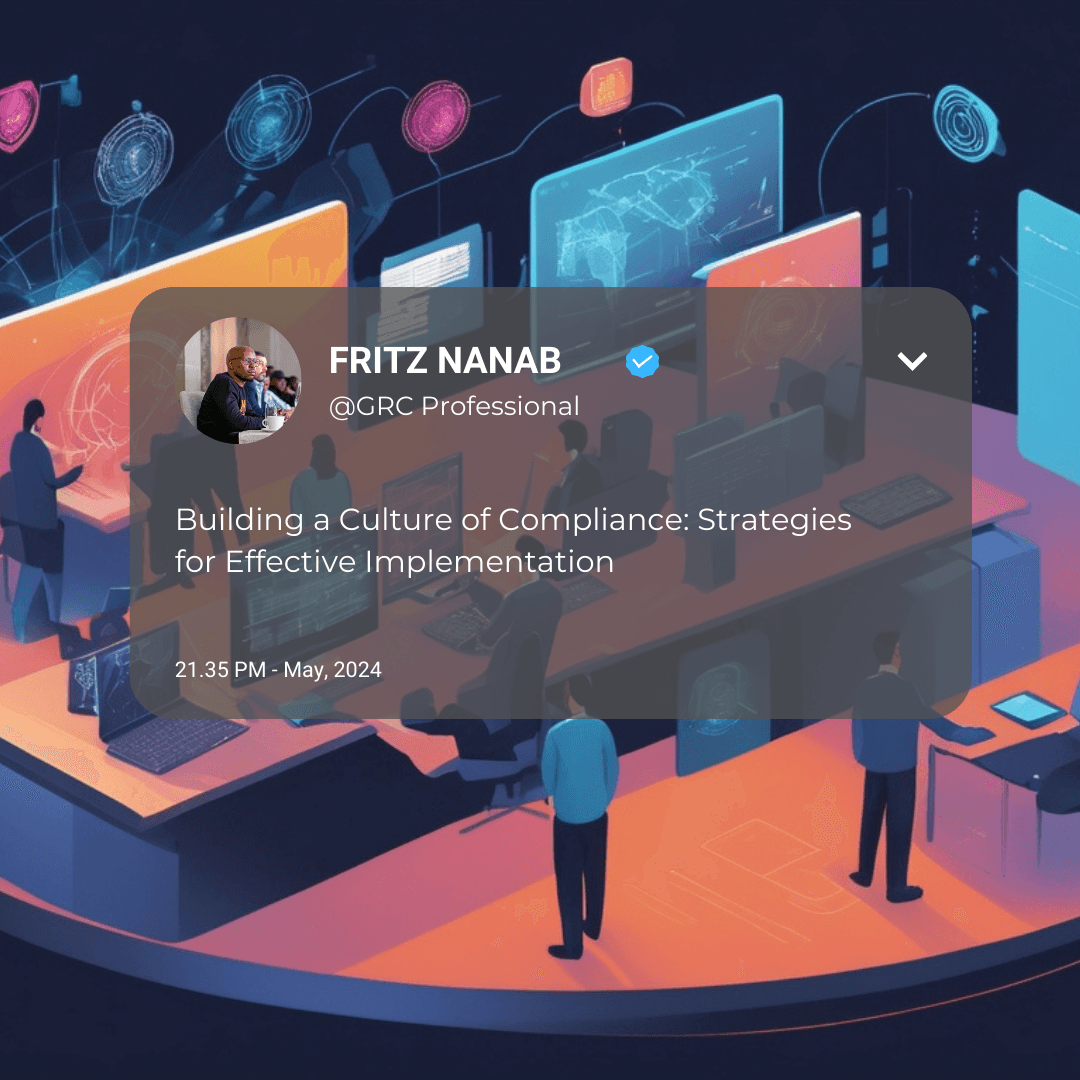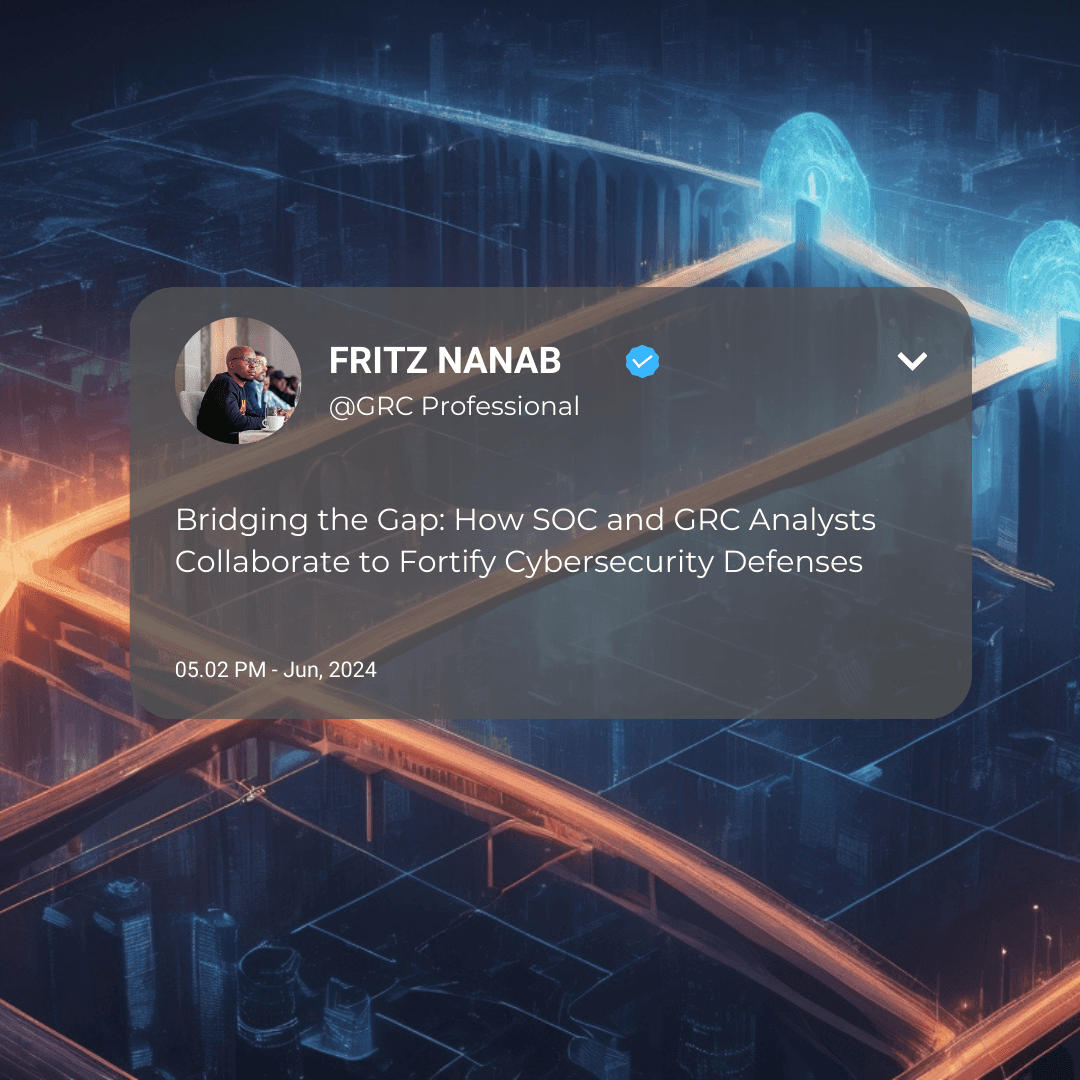Building a Culture of Compliance: Strategies for Effective Implementation

Introduction
In today's complex regulatory environment, simply having compliance policies and procedures in place is not enough. Organizations must foster a culture where compliance is woven into the fabric of daily operations and decision-making. A true culture of compliance goes beyond mere rule-following; it's about creating an environment where ethical behavior and risk awareness become second nature to every employee.
This blog post explores the concept of compliance culture and provides practical strategies for its effective implementation. We'll delve into why a strong compliance culture is crucial for modern businesses, what elements constitute such a culture, and how organizations can overcome common challenges in building and maintaining it. By the end of this post, you'll have a roadmap for transforming your organization's approach to compliance from a checkbox exercise to a core value that drives sustainable success.
Understanding Compliance Culture
A compliance culture is more than just adhering to rules and regulations. It's a shared set of attitudes, values, and behaviors that prioritize ethical conduct and risk management across all levels of an organization. Key aspects of understanding compliance culture include:
Definition: A compliance culture is an organizational environment where employees at all levels understand, value, and actively participate in maintaining compliance with laws, regulations, and internal policies.
Beyond Rule-Following: It emphasizes the spirit of compliance, not just the letter of the law. Employees are encouraged to make ethical decisions even in gray areas.
Proactive vs. Reactive: A strong compliance culture is proactive, anticipating and addressing potential issues before they become problems, rather than merely reacting to violations.
Integrated Approach: Compliance is not seen as a separate function but is integrated into all aspects of business operations and decision-making processes.
Leadership-Driven: It starts at the top, with leadership demonstrating commitment to compliance through their actions and decisions.
Continuous Process: Building a compliance culture is an ongoing effort, not a one-time initiative. It requires constant reinforcement and adaptation to changing circumstances.
Risk Management: A compliance culture is closely tied to effective risk management, helping organizations identify and mitigate potential risks before they materialize.
Understanding these aspects of compliance culture sets the foundation for building and maintaining an environment where compliance is a natural part of organizational life.
Key Elements of a Strong Compliance Culture
A robust compliance culture is built on several interconnected elements. Understanding and implementing these elements is crucial for creating an environment where compliance thrives:
Tone from the Top:
Leadership actively demonstrates commitment to compliance and ethical behavior.
Executives and managers consistently communicate the importance of compliance.
Ethical decision-making is visibly rewarded and valued at the highest levels.
Clear Policies and Procedures:
Well-documented, easily accessible compliance policies and procedures.
Regular updates to ensure alignment with current regulations and best practices.
Clear communication of expectations and consequences of non-compliance.
Open Communication:
Encouragement of open dialogue about compliance issues.
Multiple channels for reporting concerns, including anonymous options.
Protection for whistleblowers and a no-retaliation policy.
Ongoing Education and Training:
Regular, role-specific compliance training for all employees.
Interactive and engaging training methods that go beyond mere information delivery.
Real-world scenario discussions to help employees apply compliance principles.
Accountability and Consistency:
Clear assignment of compliance responsibilities across the organization.
Consistent enforcement of compliance policies at all levels.
Integration of compliance considerations into performance evaluations and incentive structures.
Continuous Monitoring and Improvement:
Regular audits and assessments of compliance programs.
Use of data analytics to identify trends and potential risk areas.
Willingness to learn from mistakes and adapt processes accordingly.
Integration with Business Strategy:
Alignment of compliance objectives with overall business goals.
Consideration of compliance implications in strategic decision-making.
Viewing compliance as a competitive advantage rather than a burden.
Ethical Decision-Making Framework:
Provision of tools and guidelines to help employees navigate ethical dilemmas.
Encouragement of critical thinking and moral reasoning.
Positive Reinforcement:
Recognition and rewards for employees who exemplify compliance culture.
Sharing of success stories and best practices across the organization.
By focusing on these elements, organizations can create a strong foundation for a compliance culture. In the next section, we'll discuss specific strategies for implementing and reinforcing these elements within an organization.
Strategies for Building a Compliance Culture
Implementing a strong compliance culture requires a multifaceted approach. Here are key strategies to effectively build and reinforce a culture of compliance:
Lead by Example:
Ensure top management visibly adheres to compliance standards.
Incorporate compliance discussions into executive meetings and communications.
Create a compliance committee led by senior executives.
Communicate Consistently:
Develop a clear, concise compliance mission statement.
Use multiple channels (e-mails, meetings, intranet) to regularly reinforce compliance messages.
Share real-world examples of how compliance has positively impacted the organization.
Empower Employees:
Provide decision-making tools and ethical frameworks.
Encourage employees to speak up about compliance concerns.
Establish a compliance ambassador program to promote peer-to-peer influence.
Tailor Training Programs:
Develop role-specific compliance training.
Use scenario-based learning to make training relevant and engaging.
Implement microlearning techniques for ongoing reinforcement.
Integrate Compliance into Processes:
Embed compliance checkpoints in key business processes.
Include compliance considerations in project planning and approval stages.
Develop compliance-oriented standard operating procedures.
Leverage Technology:
Implement compliance management software for better tracking and reporting.
Use data analytics to identify compliance trends and potential risk areas.
Automate routine compliance tasks to ensure consistency.
Align Incentives:
Include compliance metrics in performance evaluations.
Offer rewards and recognition for exemplary compliance behavior.
Ensure that business incentives don't inadvertently encourage non-compliance.
Foster a Speak-Up Environment:
Establish and promote multiple reporting channels, including anonymous options.
Respond promptly and transparently to reported issues.
Celebrate those who raise concerns as organizational heroes.
Collaborate Across Departments:
Break down silos between compliance, legal, HR, and other departments.
Create cross-functional compliance teams for major initiatives.
Ensure compliance is represented in strategic planning sessions.
Learn and Adapt:
Conduct regular assessments of the compliance program's effectiveness.
Benchmark against industry best practices.
Be willing to adjust strategies based on feedback and changing circumstances.
By implementing these strategies, organizations can create an environment where compliance becomes an integral part of the corporate culture.
Overcoming Common Challenges
Building a culture of compliance is not without its obstacles. Here are some common challenges organizations face and strategies to overcome them:
Resistance to Change:
Challenge: Employees may resist new compliance initiatives, viewing them as bureaucratic or unnecessary.
Solution:
Clearly communicate the reasons behind compliance changes.
Involve employees in the process of developing compliance procedures.
Highlight the personal and organizational benefits of a strong compliance culture.
Lack of Resources:
Challenge: Limited budget or personnel dedicated to compliance efforts.
Solution:
Prioritize high-risk areas for focused resource allocation.
Leverage technology to automate and streamline compliance processes.
Build a network of compliance champions across departments to extend reach.
Inconsistent Enforcement:
Challenge: Uneven application of compliance policies, especially for high performers or senior staff.
Solution:
Establish clear, consistent consequences for non-compliance at all levels.
Publicly recognize compliance efforts to reinforce their importance.
Ensure leadership visibly adheres to and promotes compliance standards.
Complexity of Regulations:
Challenge: Keeping up with rapidly changing and complex regulatory environments.
Solution:
Invest in ongoing training and education for compliance staff.
Utilize regulatory update services and industry associations for current information.
Develop simplified guidance for employees on key regulatory requirements.
Siloed Organizational Structure:
Challenge: Lack of communication and coordination between departments on compliance issues.
Solution:
Create cross-functional compliance committees.
Implement organization-wide compliance management systems.
Encourage regular inter-departmental meetings on compliance topics.
Short-term Business Pressures:
Challenge: Temptation to sidestep compliance for quick business gains.
Solution:
Integrate compliance considerations into business strategy and decision-making processes.
Educate on long-term benefits of compliance and risks of non-compliance.
Align incentives to reward both business performance and compliance adherence.
Measuring Effectiveness:
Challenge: Difficulty in quantifying the impact of compliance culture initiatives.
Solution:
Develop key performance indicators (KPIs) for compliance culture.
Conduct regular employee surveys to gauge compliance awareness and attitudes.
Track and analyze compliance incident data over time.
By anticipating these challenges and implementing targeted solutions, organizations can more effectively build and maintain a strong culture of compliance
Measuring Success
To ensure that efforts to build a compliance culture are effective, it's crucial to measure progress and outcomes. Here are key approaches to measuring the success of your compliance culture initiatives:
Compliance Program Effectiveness Metrics:
Number of reported compliance issues or concerns
Time taken to resolve compliance issues
Percentage of employees completing compliance training
Results of compliance audits and assessments
Employee Surveys and Feedback:
Conduct regular surveys to gauge employee understanding of compliance policies
Measure employee perception of the organization's commitment to ethics and compliance
Assess employees' comfort level in reporting potential violations
Behavioral Indicators:
Frequency of employees seeking guidance on compliance issues
Number of self-reported violations or near-misses
Instances of employees stopping projects or transactions due to compliance concerns
Cultural Assessments:
Conduct periodic cultural assessments focused on ethics and compliance
Use external benchmarking to compare your culture against industry standards
Operational Metrics:
Reduction in compliance violations over time
Decrease in regulatory fines or penalties
Improved scores on regulatory examinations
Business Impact Metrics:
Customer trust and satisfaction levels
Employee retention rates
Positive mentions in media related to ethical business practices
Leading Indicators:
Participation rates in voluntary compliance initiatives
Usage of compliance resources (e.g., helplines, policy portals)
Employee suggestions for improving compliance processes
Continuous Improvement Metrics:
Number of compliance processes improved or streamlined
Speed of adapting to new regulatory requirements
Effectiveness of remediation efforts following identified issues
External Recognition:
Industry awards or recognition for compliance programs
Positive feedback from regulators or auditors
Improved ratings in ESG (Environmental, Social, and Governance) assessments
Return on Investment (ROI):
Cost savings from avoided fines or legal issues
Efficiency gains from improved compliance processes
Business opportunities gained due to strong compliance reputation
Remember that while quantitative metrics are important, qualitative assessments are equally crucial in evaluating the true state of your compliance culture. Regular review and adjustment of these measurement approaches will ensure they continue to provide meaningful insights as your compliance culture evolves.
- Fritz Nanab

